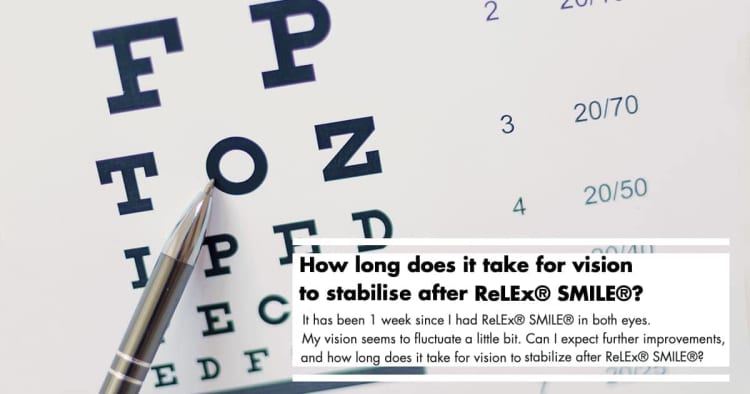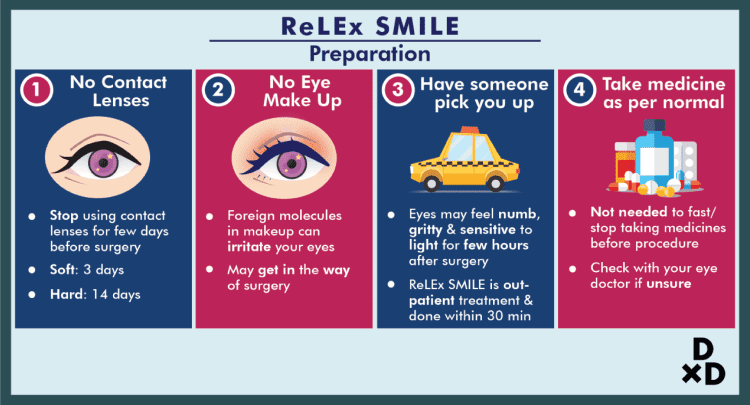Let’s take a step back first, and see if we can answer this question:
Why do people get dry eyes after LASIK?
Most eyes do get somewhat drier after any kind of laser corneal refractive surgery, whether it is LASIK, PRK/epiLASIK, or SMILE.
This induction of dryness is related to several factors, such as:
1. Disturbance of corneal surface innervation
2. Alteration of corneal surface shape
3. Effects of various anaesthetic/antibiotic/anti-inflammatory eyedrops during and after surgery.
Possibly the more significant difference between these methods is how corneal surface innervation is affected.
This is important since reduced corneal sensation is thought to reduce dryness feedback and contribute to reduced tear secretion.
How much disturbance to corneal surface innervation is there for the various surgical procedures (LASIK/SMILE/PRK/epiLASIK)?
In LASIK, most of the corneal nerve ends to the flap are ‘disconnected’, except at the hinge area of the flap.
However, since the flap is very thin, the distance which the nerves need to grow back into the flap is also very short.
(Remember, these are just nerve branches that are affected, not the cell bodies, so there is regrowth and reinnervation of the LASIK corneal flap with time.)
In SMILE, there is also a reduction of corneal cap innervation. This is because there is a wound through which the lenticule is accessed and removed, and also because removal of the lenticule disconnects nerve branches that come up from deeper parts of the cornea.
However, because there is no circumferential flap cut, there is less disturbance compared with LASIK.
In PRK/epiLASIK, there is no flap and no lenticule, so corneal innervation is disturbed the least and would be expected to recover fastest among the 3 methods.
Is there any laser procedure that does not cause dry eyes?
Anecdotally, most patients regardless which method was performed, experienced increased eye dryness in the early period after surgery.
There is a meta-analysis of studies comparing LASIK and SMILE and I quote the abstract conclusion for simplicity:
“Dry eye after both SMILE and FS-LASIK usually occurs transiently. SMILE does not show obvious superiority over FS-LASIK by exhibiting similar and acceptable objective parameters, and SMILE may have milder subjective symptoms.”
Certain parameters like tear film break up time were better with SMILE than LASIK, but when questionnaires regarding dry eye related symptoms and quality of life issues were given to patients in a blinded fashion, there was no significant difference in the answers.
If you have dry eyes, what do you need to consider?
If a patient with dry eyes is considering refractive surgery, the most important factor is its severity.
The following helps your doctor determine the severity of your dryness:
1. Are there a lot of dry spots (punctate erosions) on the cornea?
2. How often must you use artificial tears to maintain function?
3. Also, are there underlying problems like the use of isotretinoin for treating acne, which could make your eyes very dry?
How do I manage patients with dry eyes?
Generally, if the dry eye problem is mild, or is associated with contact lens wear, then there is usually no problem with any of the methods above including LASIK.
Yes, the eyes can get drier in the early period after surgery, but even with LASIK, recovery usually occurs by 6 months and often earlier.
There may be somewhat earlier recovery with SMILE, but even this also causes an increase in dryness post-operatively.
Patients who are taking isotretinoin should stop taking it before surgery, and ideally wait for several months after stopping before considering LASIK.
For people with a lot of dry spots, I would generally postpone surgery and treat the dryness aggressively with frequent artificial tear drops and perhaps punctal plugging.
Would SMILE be better than LASIK for patients with dry eyes?
Perhaps, bearing in mind that surface ablation like PRK/epiLASIK might be an even better option if the patient can put up with the delayed visual recovery.
What about patients with severe dry eyes?
For severe dry eyes, generally I would advise against any kind of laser corneal refractive surgery.
The induced dryness, regardless of method, may affect healing, and cause prolonged blurring of vision.
To sum up:
I personally don’t think there is a huge difference in terms of dryness induction following LASIK or SMILE.
Both methods cause some temporary increase in dryness, which might be milder in SMILE. This is not clearly shown in large studies.
If I thought someone’s eyes were too dry for LASIK, I would hesitate to recommend SMILE too.
The main advantage of SMILE over LASIK is that there is no flap.
The main advantage of SMILE overPRK/epiLASIK is better comfort and faster visual recovery.
The advantages with LASIK over SMILE include:
1. Custom wavefront guided treatments with LASIK
2. Flexibility to treat all kinds of spectacle power (SMILE is restricted to moderate to high myopia, and low astigmatism only to about 150 degrees; LASIK is OK to treat up to around 400 degrees of astigmatism).
3. Ease of enhancing in case of remaining power after surgery – with LASIK the flap is simply lifted and the eye retreated, while with SMILE an enhancement requires conversion to either LASIK or PRK/epiLASIK.
These factors, in my mind, should be the main arbiter of the final chosen method.
Dryness is a consideration, but a minor one only.





